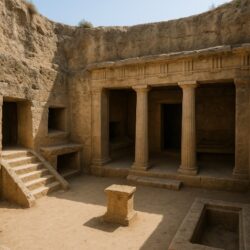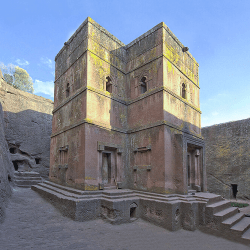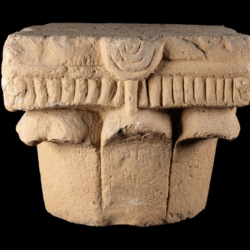The Great Pyramid of Giza, standing as the most iconic symbol of ancient Egyptian civilization, is more than just an architectural marvel. Built as a tomb for Pharaoh Khufu around 2560 BC, this ancient structure was originally encased in gleaming white limestone and adorned with a golden or electrum capstone. These features not only elevated its grandeur but also reflected the spiritual and cultural ideals of the ancient Egyptians.
A Gleaming Masterpiece of Limestone
In its prime, the Great Pyramid was entirely encased in highly polished Tura limestone, a type of white stone sourced from nearby quarries. These stones were meticulously cut, smoothed, and fitted together with remarkable precision, creating a seamless surface. The reflective quality of the limestone allowed the pyramid to shimmer in the sunlight, making it a dazzling beacon visible from great distances. This radiant effect was not merely aesthetic—it symbolized the pharaoh’s divine power and eternal connection to the sun god Ra, a central deity in Egyptian religion.
Over the centuries, much of this outer casing was removed, likely repurposed for other construction projects, leaving the rugged core structure visible today. However, historical accounts and archaeological studies allow us to imagine the pyramid in its original luminous state—a sight that would have been awe-inspiring to behold.
The Crown Jewel: A Golden Capstone
Atop the pyramid, a capstone, known as a “pyramidion,” completed the structure. This capstone was likely crafted from gold or electrum, a naturally occurring alloy of gold and silver. The reflective surface of the capstone would have intensified the pyramid’s brilliance, symbolizing the sun’s divine radiance and the pharaoh’s connection to the celestial realm.
The capstone’s placement at the apex of the pyramid held profound symbolic significance. It represented the convergence of earthly and divine realms, with the pharaoh acting as the intermediary. The choice of gold, a metal associated with immortality and divinity, reinforced this connection. While the original capstone has long since been lost to time, its role in the pyramid’s design remains a key aspect of its historical and cultural importance.
A Testament to Engineering Genius
The Great Pyramid was not only a spiritual symbol but also an unparalleled engineering achievement. Constructed with an estimated 2.3 million stone blocks, each weighing between 2.5 and 15 tons, the pyramid was built with extraordinary precision. The alignment of its base is almost perfectly square and aligned to the cardinal points of the compass, a feat that demonstrates the advanced understanding of mathematics and astronomy by ancient Egyptian architects.
The limestone casing stones were carefully angled and polished to ensure that the pyramid reflected light as a cohesive whole, turning it into a brilliant landmark that proclaimed the pharaoh’s legacy. Such intricate craftsmanship speaks to the labor, resources, and skill involved in creating this monumental structure.
A Symbol of Eternity and Divine Power
The Great Pyramid’s dazzling appearance and monumental scale were not merely architectural features but powerful symbols of eternity and divine authority. The reflective limestone and golden capstone emphasized the pharaoh’s divine status and his journey to the afterlife, as the pyramid was designed to facilitate his ascension to join the gods in the celestial realm.
In the minds of the ancient Egyptians, the pyramid’s connection to the sun and its role as a literal and symbolic bridge between the earth and the heavens underscored their deep spiritual beliefs. It stood as a testament to their reverence for the natural and cosmic order, with the pharaoh embodying the eternal cycle of life, death, and rebirth.
Today, although its limestone casing and capstone are gone, the Great Pyramid of Giza remains a monumental testament to the ingenuity, vision, and spiritual depth of one of the world’s most remarkable ancient civilizations. Its legacy as a radiant wonder continues to inspire awe and admiration, bridging the past and present in the sands of time.













